Please Complete M1 and M2 form
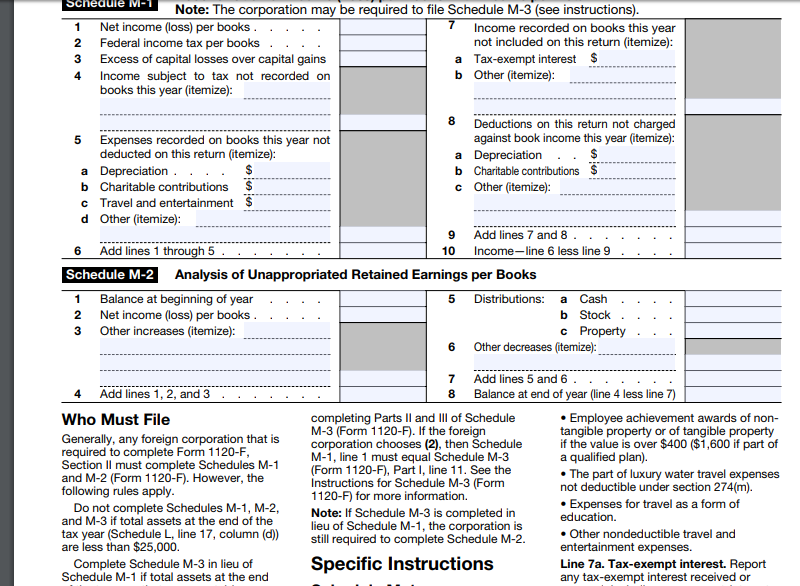
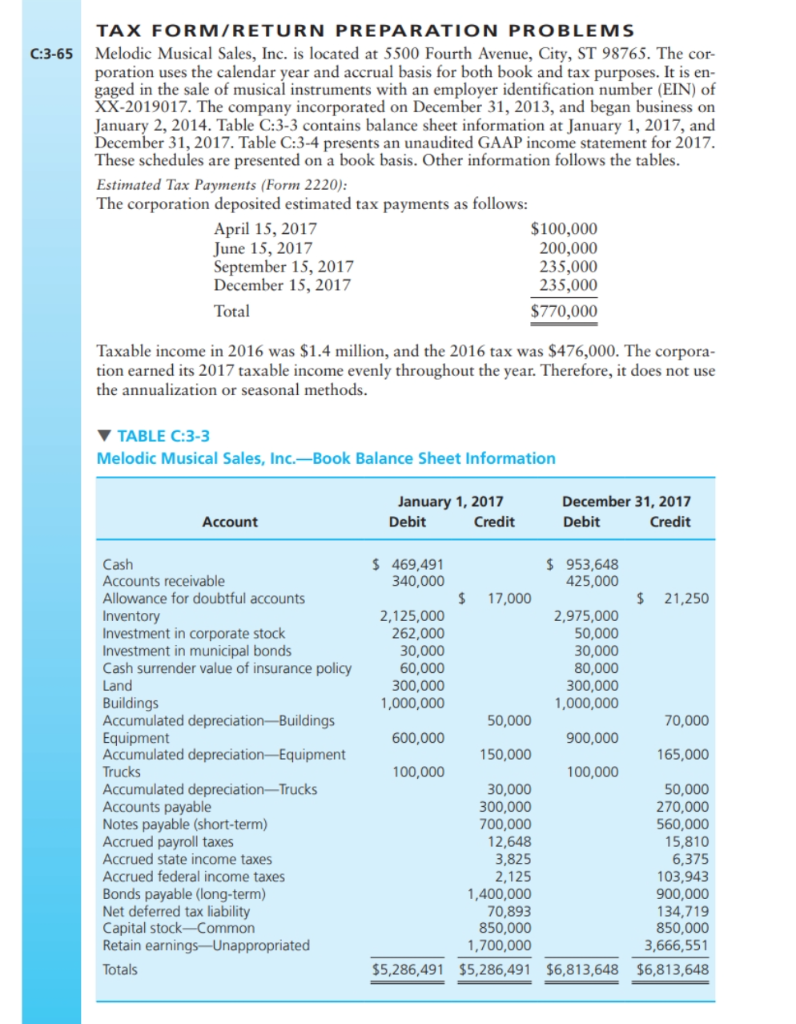
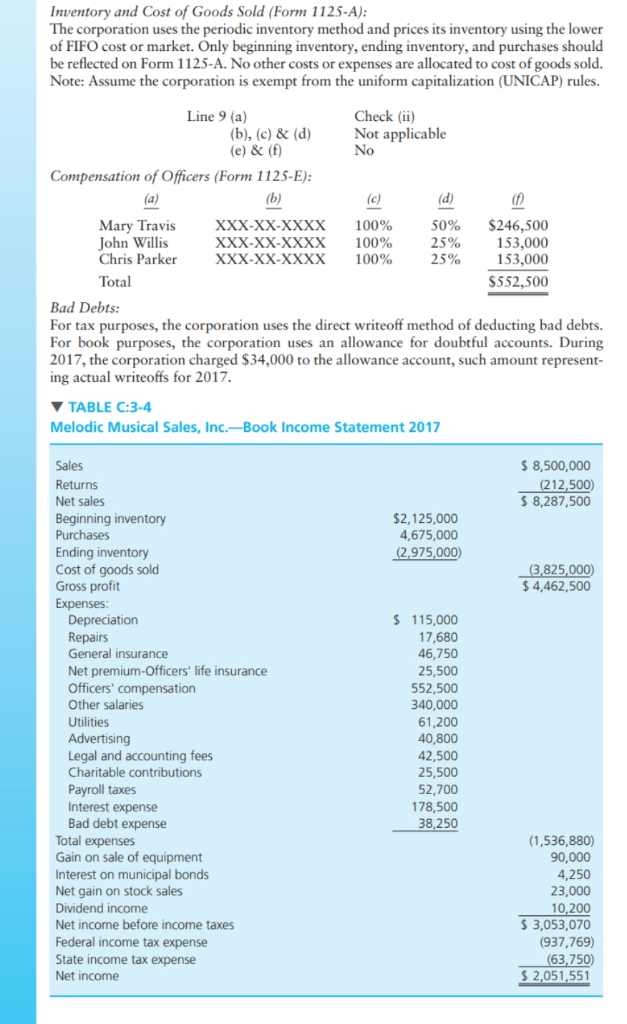
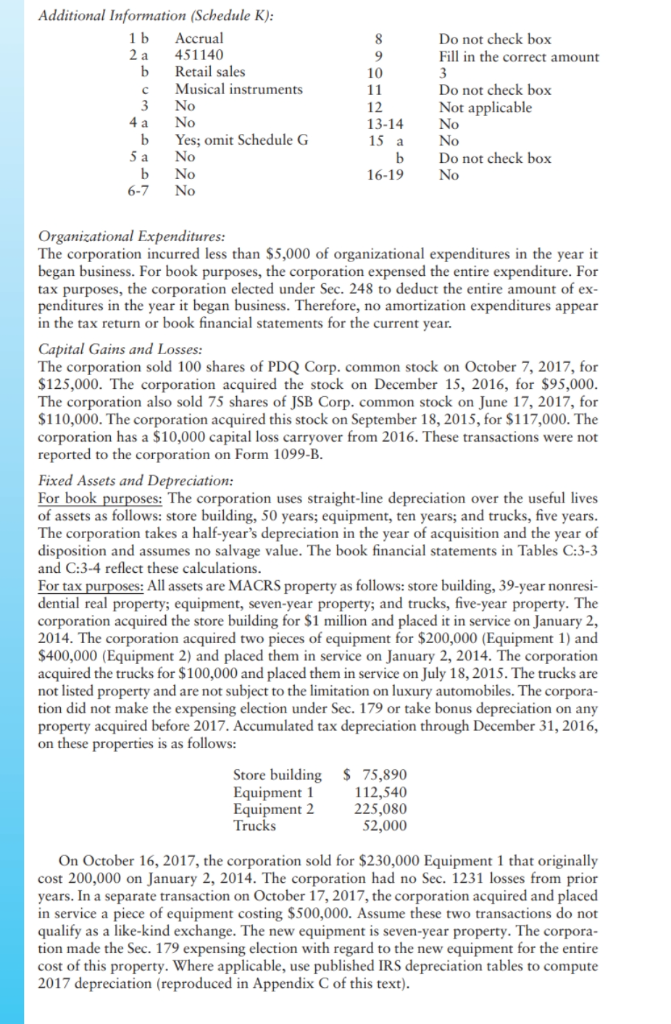
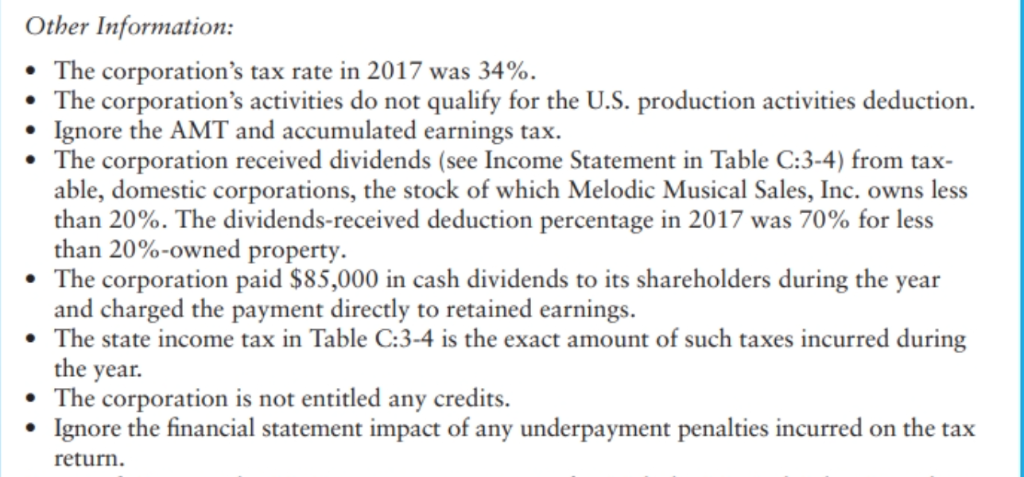
Schedule M-T Note: The corporation may be required to file Schedule M-3 (see instructions). Income recorded on books this year not included on this return (itemize) 2 Federal income tax per books . 3 Excess of capital losses over capital gains 4 Income subject to tax not recorded on a Tax-exempt interest $ b Other (itemize) books this year (itemize) 8 Deductions on this return not charged against book income this year (itemize): Depreciation.. $ 5 Expenses recorded on books this year not deducted on this return (itemize): a b Charitable contributions c Travel and entertainment d Other (itemize) c Other (itemize): 9 Add lines 7 and 8 10 Income-line 6 less line .. . 6 Add lines 1 Schedule M-2 Analysis of Unappropriated Retained Earnings per Books 1 2 3 Balance at beginning of year.. Net income (loss) per books Other increases (itemize): 5 Distributions: a Cash... . . b Stock . c Property. 6 Other decreases (temize): 4 Add lines 1, 2, and 3 8 Balance at end of year (line 4 less line 7) completing Parts Il and Ill of Schedule M-3 (Form 1120-F). If the foreign corporation chooses (2), then Schedule M-1, line 1 must equal Schedule M-3 (Form 1120-F), Part I, line 11. See the Instructions for Schedule M-3 (Form 1120-F) for more information. Note: If Schedule M-3 is completed in lieu of Schedule M-1, the corporation is still required to complete Schedule M-2. Employee achievement awards of non- tangible property or of tangible property if the value is over $400 ($1,600 if part of a qualified plan). The part of luxury water travel expenses not deductible under section 274(m). Who Must File Generally, any foreign corporation that is required to complete Form 1120-F Section Il must complete Schedules M-1 and M-2 (Form 1120-F). However, the following rules apply Expenses for travel as a form of education. Do not complete Schedules M-1, M-2, and M-3 if total assets at the end of the tax year (Schedule L, line 17, column (d)) are less than $25,000. Other nondeductible travel and entertainment expenses. Line 7a. Tax-exempt interest. Report any tax-exempt interest received or Complete Schedule M-3 in lieu of Schedule M-1 if total assets at the end Specific Instructions TAX FORM/RETURN PREPARATION PROBLEMS Melodic Musical Sales, Inc. is located at 5500 Fourth Avenue, City, ST 98765. The cor- poration uses the calendar year and accrual basis for both book and tax gaged in the sale of musical instruments with an employer identification number (EIN) of XX-2019017. The company incorporated on December 31, 2013, and began business on January 2, 2014. Table C:3-3 contains balance sheet information at January 1, 2017, and December 31, 2017. Table C:3-4 presents an unaudited GAAP income statement for 2017. These schedules are presented on a book basis. Other information follows the tables. Estimated Tax Payments (Form 2220) The corporation deposited estimated tax payments as follows: C:3-65 purposes. It is en April 15, 2017 June 15, 2017 September 15, 2017 December 15, 2017 Total $100,000 200,000 235,000 235,000 $770,000 Taxable income in 2016 was $1.4 million, and the 2016 tax was $476,000. The corpora tion earned its 2017 taxable income evenly throughout the year. Therefore, it does not use the annualization or seasonal methods TABLE C:3-3 Melodic Musical Sales, Inc.-Book Balance Sheet Information January 1, 2017 December 31, 2017 Debit Account Credit Credit S 469,491 340,000 953,648 425,000 Accounts receivable Allowance for doubtful accounts Inventory Investment in corporate stock Investment in municipal bonds Cash surrender value of insurance policy Land Buildings Accumulated depreciation-Buildings Equipment Accumulated depreciation-Equipment Trucks Accumulated depreciation-Trucks Accounts payable Notes payable (short-term) Accrued Accrued state income taxes Accrued federal income taxes Bonds payable (long-term) Net deferred tax liability Capital stock-Common Retain earnings-Unappropriated Totals $ 17,000 2,125,000 262,000 30,000 60,000 300,000 1,000,000 2,975,000 50,000 30,000 80,000 300,000 1,000,000 50,000 70,000 600,000 900,000 150,000 165,000 100,000 100,000 30,000 300,000 700,000 2,648 3,825 50,000 270,000 560,000 payroll taxes 1,400,000 70,893 850,000 1,700,000 6,375 103,943 900,000 34,719 850,000 3,666,551 5,286,491 $5,286,491 $6,813,648 $6,813,648 Inventory and Cost of Goods Sold (Form 1125-A) The corporation uses the periodic inventory method and prices its inventory using the lower of FIFO cost or market. Only beginning inventory, ending inventory, and purchases should be reflected on Form 1125-A. No other costs or expenses are allocated to cost of goods sold. Note: Assume the corporation is exempt from the uniform capitalization (UNICAP) rules. Check (ii) Not applicable Line 9 (a) (e) & (f Compensation of Officers (Form 1125-E) Mary Travis John Willis Chris Parker Total XXX-XX-XXXX XXX-XX-XXXX XXX-XX-XXXX 100% 10090 100% 50% 25% 25% $246,500 153,000 153,000 $552,500 Bad Debts: For tax purposes, the corporation uses the direct writeoff method of deducting bad debts. For boolk 2017, the corporation charged $34,000 to the allowance account, such amount represent ing actual writeoffs for 2017. purposes, the corporation uses an allowance for doubtful accounts. During TABLE C:3-4 Melodic Musical Sales, Inc.-Book Income Statement 2017 Sales Returns Net sales Beginning inventory S 8,500,000 (212,500) 8,287,500 $2,125,000 4,675,000 2.975,000) Ending inventory Cost of goods sold Gross profit Expenses (3,825,000) 4,462,500 Depreciation Repairs General insurance Net premium-Officers' life insurance Officers' compensation Other salaries Utilities Advertising Legal and accounting fees Charitable contributions Payroll taxes Interest expense Bad debt expense 115,000 17,680 46,750 25,500 552,500 340,000 61,200 40,800 42,500 25,500 52,700 178,500 38,250 Total expenses Gain on sale of equipment Interest on municipal bonds Net gain on stock sales Dividend income Net income before income taxes Federal income tax expense State income tax expense Net income (1,536,880) 90,000 4,250 23,000 10,200 S 3,053,070 (937,769) (63,750) 2,051,551 Additional Information (Schedule K) 1b Accrual 2 a 451140 Do not check box Fill in the correct amount b Retail sales c Musical instruments 3 No 10 Do not check box Not applicable 12 13-14 No 15 aNo 4a No 5a No 6-7 No b Yes; omit Schedule G b Do not check box b No 16-19 No Organizational Expenditures: The corporation incurred less than $5,000 of organizational expenditures in the year it began business. For boo tax purposes, the corporation elected under Sec. 248 to deduct the entire amount of ex penditures in the year it began business. Therefore, no amortization expenditures appear in the tax return or book financial statements for the current year. k purposes, the corporation expensed the entire expenditure. For Capital Gains and Losses: The corporation sold 100 shares of PDQ Corp. common stock on October 7, 2017, for $125,000. The The corporation also sold 75 shares of JSB Corp. common stock on June 17, 2017, for $110,000. The corporation acquired this stock on September 18, 2015, for $117,000. The corporation has a $10,000 capital loss carryover from 2016. These transactions were not reported to the corporation on Form 1099-B corporation acquired the stock on December 15, 2016, for $95,000 Fixed Assets and Depreciation For book purposes: The corporation uses straight-line depreciation over the useful lives of assets as follows: store building, 50 years; equipment, ten years; and trucks, five years. The corporation takes a half-year's depreciation in the year of acquisition and the year of disposition and assumes no salvage value. The book financial statements in Tables C:3-3 and C:3-4 reflect these calculations. For tax purposes: All assets are MACR dential real property; equipment, seven-year property; and trucks, five-year property. The corporation acquired the store building for $1 million and placed it in service on January 2, 2014. The corporation acquired two pieces of equipment for $200,000 (Equipment 1) and $400,000 (Equipment 2) and placed them in service on January 2, 2014. The corporation acquired the trucks for $100,000 and placed them in service on July 18,2015. The trucks are not listed property and are not subject to the limitation on luxury automobiles. The c tion did not make the expensing election under Sec. 179 or take bonus depreciation on any property acquired before 2017. Accumulated tax depreciation through December 31, 2016, on these properties is as follows: S property as follows: store building, 39-year nonresi- orpora Store building $ 75,890 Equipment 112,540 Equipment 2 225,080 TruckS 52,000 On October 16, 2017, the corporation sold for $230,000 Equipment 1 that originally cost 200,000 on January 2, 2014. The corporation had no Sec. 1231 losses from prior years. In a separate transaction on October 17, 2017, the corporation acquired and placed in service a piece of equipment costing $500,000. Assume these two transactions do not qualify as a like-kind exchange. The new equipment is seven-year property. The corpora- tion made the Sec. 179 expensing election with regard to the new equipment for the entire cost of this property 2017 depreciation (reproduced in Appendix C of this text) Where applicable, use published IRS depreciation tables to compute Other Information: . The corporation's tax rate in 2017 was 34%. The corporation's activities do not qualify for the U.S. production activities deduction. Ignore the AMT and accumulated earnings tax. The corporation received dividends (see Income Statement in Table C:3-4) from tax- able, domestic corporations, the stock of which Melodic Musical Sales, Inc. owns less than 20%. The dividends-received deduction percentage in 2017 was 70% for less than 20%-owned property. The corporation paid $85,000 in cash dividends to its shareholders during the year and charged the payment directly to retained earnings. The state income tax in Table C:3-4 is the exact amount of such taxes incurred during the year. The corporation is not entitled any credits. Ignore the financial statement impact of any underpayment penalties incurred on the tax return. Schedule M-T Note: The corporation may be required to file Schedule M-3 (see instructions). Income recorded on books this year not included on this return (itemize) 2 Federal income tax per books . 3 Excess of capital losses over capital gains 4 Income subject to tax not recorded on a Tax-exempt interest $ b Other (itemize) books this year (itemize) 8 Deductions on this return not charged against book income this year (itemize): Depreciation.. $ 5 Expenses recorded on books this year not deducted on this return (itemize): a b Charitable contributions c Travel and entertainment d Other (itemize) c Other (itemize): 9 Add lines 7 and 8 10 Income-line 6 less line .. . 6 Add lines 1 Schedule M-2 Analysis of Unappropriated Retained Earnings per Books 1 2 3 Balance at beginning of year.. Net income (loss) per books Other increases (itemize): 5 Distributions: a Cash... . . b Stock . c Property. 6 Other decreases (temize): 4 Add lines 1, 2, and 3 8 Balance at end of year (line 4 less line 7) completing Parts Il and Ill of Schedule M-3 (Form 1120-F). If the foreign corporation chooses (2), then Schedule M-1, line 1 must equal Schedule M-3 (Form 1120-F), Part I, line 11. See the Instructions for Schedule M-3 (Form 1120-F) for more information. Note: If Schedule M-3 is completed in lieu of Schedule M-1, the corporation is still required to complete Schedule M-2. Employee achievement awards of non- tangible property or of tangible property if the value is over $400 ($1,600 if part of a qualified plan). The part of luxury water travel expenses not deductible under section 274(m). Who Must File Generally, any foreign corporation that is required to complete Form 1120-F Section Il must complete Schedules M-1 and M-2 (Form 1120-F). However, the following rules apply Expenses for travel as a form of education. Do not complete Schedules M-1, M-2, and M-3 if total assets at the end of the tax year (Schedule L, line 17, column (d)) are less than $25,000. Other nondeductible travel and entertainment expenses. Line 7a. Tax-exempt interest. Report any tax-exempt interest received or Complete Schedule M-3 in lieu of Schedule M-1 if total assets at the end Specific Instructions TAX FORM/RETURN PREPARATION PROBLEMS Melodic Musical Sales, Inc. is located at 5500 Fourth Avenue, City, ST 98765. The cor- poration uses the calendar year and accrual basis for both book and tax gaged in the sale of musical instruments with an employer identification number (EIN) of XX-2019017. The company incorporated on December 31, 2013, and began business on January 2, 2014. Table C:3-3 contains balance sheet information at January 1, 2017, and December 31, 2017. Table C:3-4 presents an unaudited GAAP income statement for 2017. These schedules are presented on a book basis. Other information follows the tables. Estimated Tax Payments (Form 2220) The corporation deposited estimated tax payments as follows: C:3-65 purposes. It is en April 15, 2017 June 15, 2017 September 15, 2017 December 15, 2017 Total $100,000 200,000 235,000 235,000 $770,000 Taxable income in 2016 was $1.4 million, and the 2016 tax was $476,000. The corpora tion earned its 2017 taxable income evenly throughout the year. Therefore, it does not use the annualization or seasonal methods TABLE C:3-3 Melodic Musical Sales, Inc.-Book Balance Sheet Information January 1, 2017 December 31, 2017 Debit Account Credit Credit S 469,491 340,000 953,648 425,000 Accounts receivable Allowance for doubtful accounts Inventory Investment in corporate stock Investment in municipal bonds Cash surrender value of insurance policy Land Buildings Accumulated depreciation-Buildings Equipment Accumulated depreciation-Equipment Trucks Accumulated depreciation-Trucks Accounts payable Notes payable (short-term) Accrued Accrued state income taxes Accrued federal income taxes Bonds payable (long-term) Net deferred tax liability Capital stock-Common Retain earnings-Unappropriated Totals $ 17,000 2,125,000 262,000 30,000 60,000 300,000 1,000,000 2,975,000 50,000 30,000 80,000 300,000 1,000,000 50,000 70,000 600,000 900,000 150,000 165,000 100,000 100,000 30,000 300,000 700,000 2,648 3,825 50,000 270,000 560,000 payroll taxes 1,400,000 70,893 850,000 1,700,000 6,375 103,943 900,000 34,719 850,000 3,666,551 5,286,491 $5,286,491 $6,813,648 $6,813,648 Inventory and Cost of Goods Sold (Form 1125-A) The corporation uses the periodic inventory method and prices its inventory using the lower of FIFO cost or market. Only beginning inventory, ending inventory, and purchases should be reflected on Form 1125-A. No other costs or expenses are allocated to cost of goods sold. Note: Assume the corporation is exempt from the uniform capitalization (UNICAP) rules. Check (ii) Not applicable Line 9 (a) (e) & (f Compensation of Officers (Form 1125-E) Mary Travis John Willis Chris Parker Total XXX-XX-XXXX XXX-XX-XXXX XXX-XX-XXXX 100% 10090 100% 50% 25% 25% $246,500 153,000 153,000 $552,500 Bad Debts: For tax purposes, the corporation uses the direct writeoff method of deducting bad debts. For boolk 2017, the corporation charged $34,000 to the allowance account, such amount represent ing actual writeoffs for 2017. purposes, the corporation uses an allowance for doubtful accounts. During TABLE C:3-4 Melodic Musical Sales, Inc.-Book Income Statement 2017 Sales Returns Net sales Beginning inventory S 8,500,000 (212,500) 8,287,500 $2,125,000 4,675,000 2.975,000) Ending inventory Cost of goods sold Gross profit Expenses (3,825,000) 4,462,500 Depreciation Repairs General insurance Net premium-Officers' life insurance Officers' compensation Other salaries Utilities Advertising Legal and accounting fees Charitable contributions Payroll taxes Interest expense Bad debt expense 115,000 17,680 46,750 25,500 552,500 340,000 61,200 40,800 42,500 25,500 52,700 178,500 38,250 Total expenses Gain on sale of equipment Interest on municipal bonds Net gain on stock sales Dividend income Net income before income taxes Federal income tax expense State income tax expense Net income (1,536,880) 90,000 4,250 23,000 10,200 S 3,053,070 (937,769) (63,750) 2,051,551 Additional Information (Schedule K) 1b Accrual 2 a 451140 Do not check box Fill in the correct amount b Retail sales c Musical instruments 3 No 10 Do not check box Not applicable 12 13-14 No 15 aNo 4a No 5a No 6-7 No b Yes; omit Schedule G b Do not check box b No 16-19 No Organizational Expenditures: The corporation incurred less than $5,000 of organizational expenditures in the year it began business. For boo tax purposes, the corporation elected under Sec. 248 to deduct the entire amount of ex penditures in the year it began business. Therefore, no amortization expenditures appear in the tax return or book financial statements for the current year. k purposes, the corporation expensed the entire expenditure. For Capital Gains and Losses: The corporation sold 100 shares of PDQ Corp. common stock on October 7, 2017, for $125,000. The The corporation also sold 75 shares of JSB Corp. common stock on June 17, 2017, for $110,000. The corporation acquired this stock on September 18, 2015, for $117,000. The corporation has a $10,000 capital loss carryover from 2016. These transactions were not reported to the corporation on Form 1099-B corporation acquired the stock on December 15, 2016, for $95,000 Fixed Assets and Depreciation For book purposes: The corporation uses straight-line depreciation over the useful lives of assets as follows: store building, 50 years; equipment, ten years; and trucks, five years. The corporation takes a half-year's depreciation in the year of acquisition and the year of disposition and assumes no salvage value. The book financial statements in Tables C:3-3 and C:3-4 reflect these calculations. For tax purposes: All assets are MACR dential real property; equipment, seven-year property; and trucks, five-year property. The corporation acquired the store building for $1 million and placed it in service on January 2, 2014. The corporation acquired two pieces of equipment for $200,000 (Equipment 1) and $400,000 (Equipment 2) and placed them in service on January 2, 2014. The corporation acquired the trucks for $100,000 and placed them in service on July 18,2015. The trucks are not listed property and are not subject to the limitation on luxury automobiles. The c tion did not make the expensing election under Sec. 179 or take bonus depreciation on any property acquired before 2017. Accumulated tax depreciation through December 31, 2016, on these properties is as follows: S property as follows: store building, 39-year nonresi- orpora Store building $ 75,890 Equipment 112,540 Equipment 2 225,080 TruckS 52,000 On October 16, 2017, the corporation sold for $230,000 Equipment 1 that originally cost 200,000 on January 2, 2014. The corporation had no Sec. 1231 losses from prior years. In a separate transaction on October 17, 2017, the corporation acquired and placed in service a piece of equipment costing $500,000. Assume these two transactions do not qualify as a like-kind exchange. The new equipment is seven-year property. The corpora- tion made the Sec. 179 expensing election with regard to the new equipment for the entire cost of this property 2017 depreciation (reproduced in Appendix C of this text) Where applicable, use published IRS depreciation tables to compute Other Information: . The corporation's tax rate in 2017 was 34%. The corporation's activities do not qualify for the U.S. production activities deduction. Ignore the AMT and accumulated earnings tax. The corporation received dividends (see Income Statement in Table C:3-4) from tax- able, domestic corporations, the stock of which Melodic Musical Sales, Inc. owns less than 20%. The dividends-received deduction percentage in 2017 was 70% for less than 20%-owned property. The corporation paid $85,000 in cash dividends to its shareholders during the year and charged the payment directly to retained earnings. The state income tax in Table C:3-4 is the exact amount of such taxes incurred during the year. The corporation is not entitled any credits. Ignore the financial statement impact of any underpayment penalties incurred on the tax return











